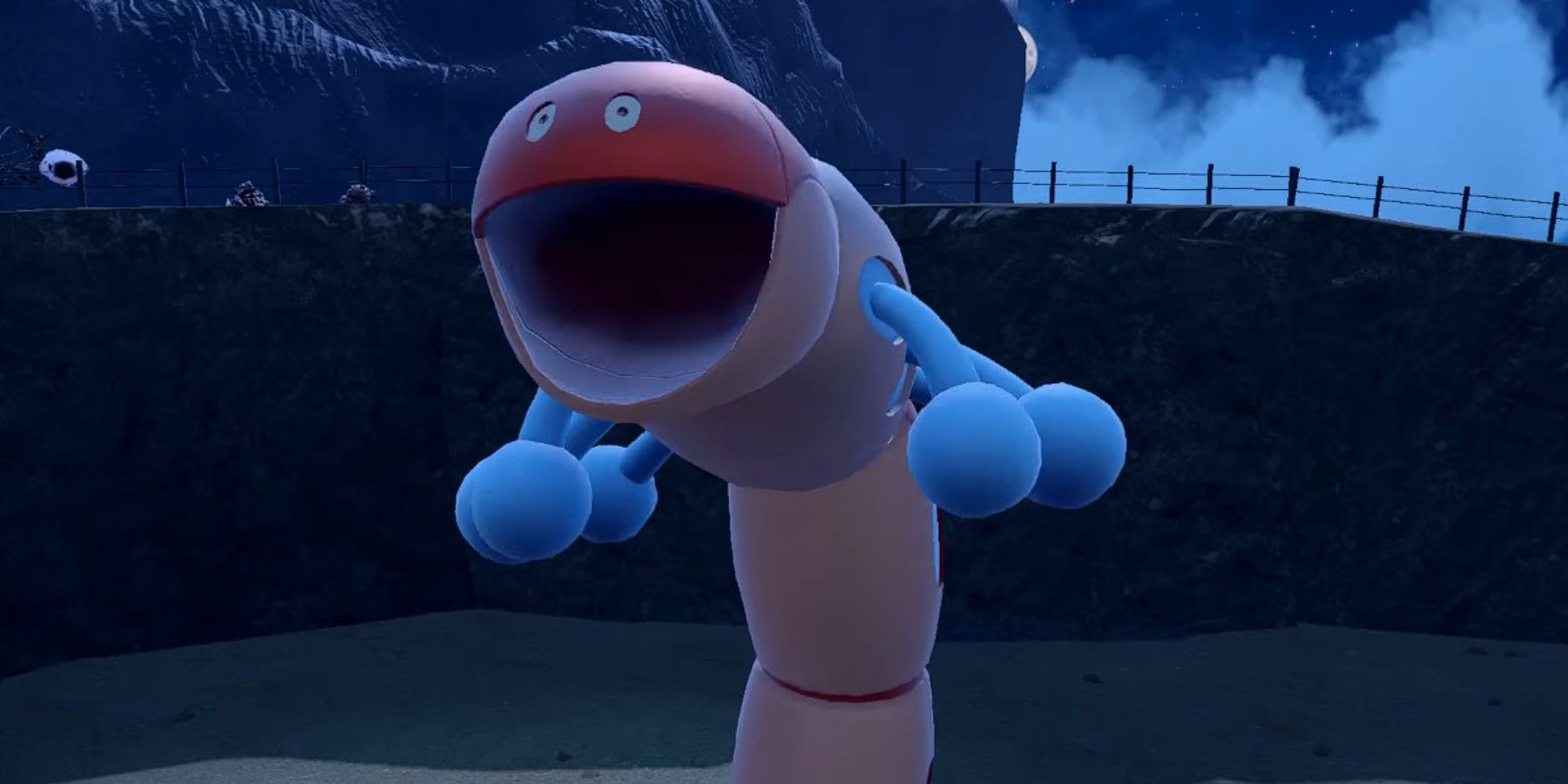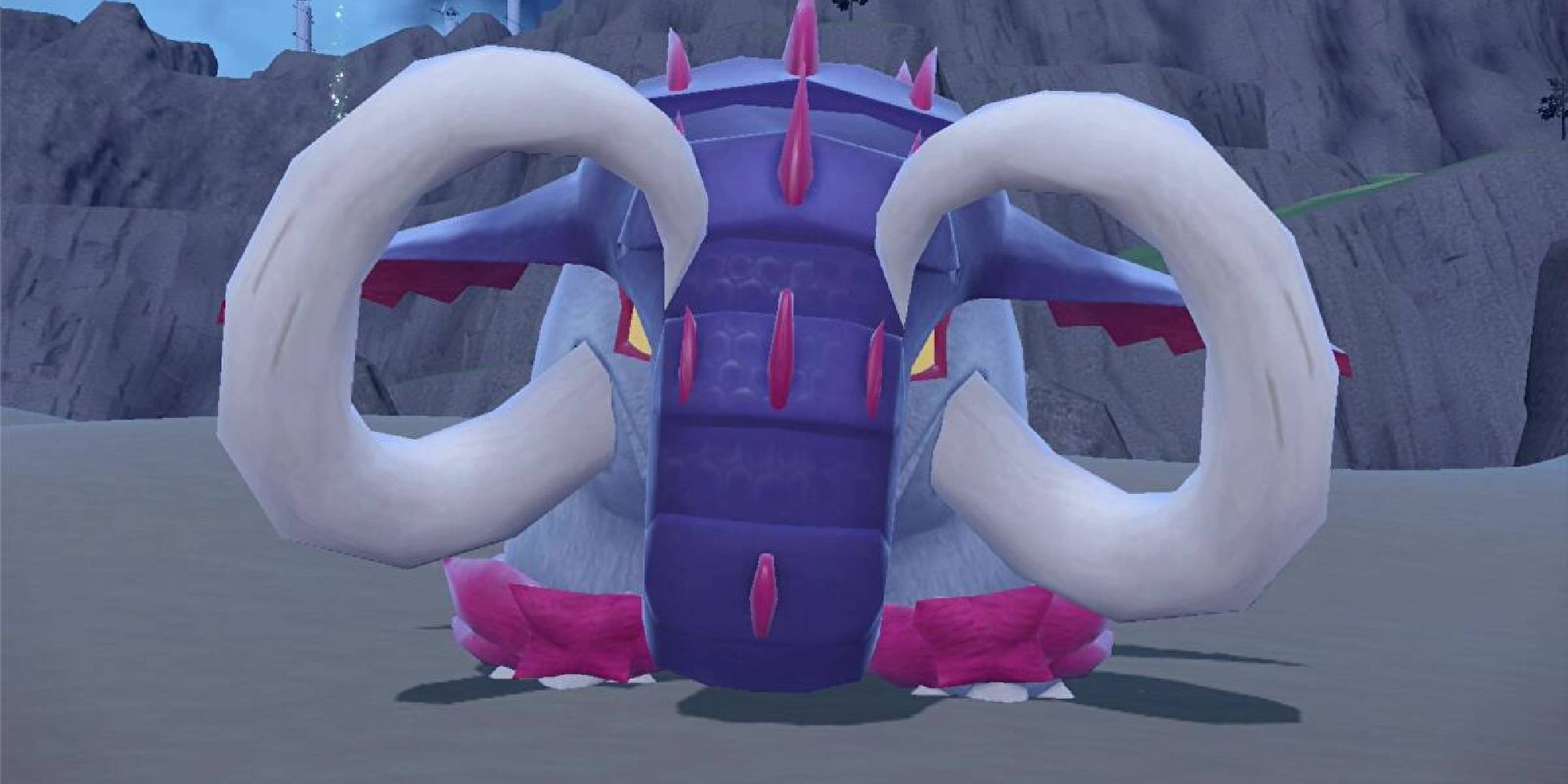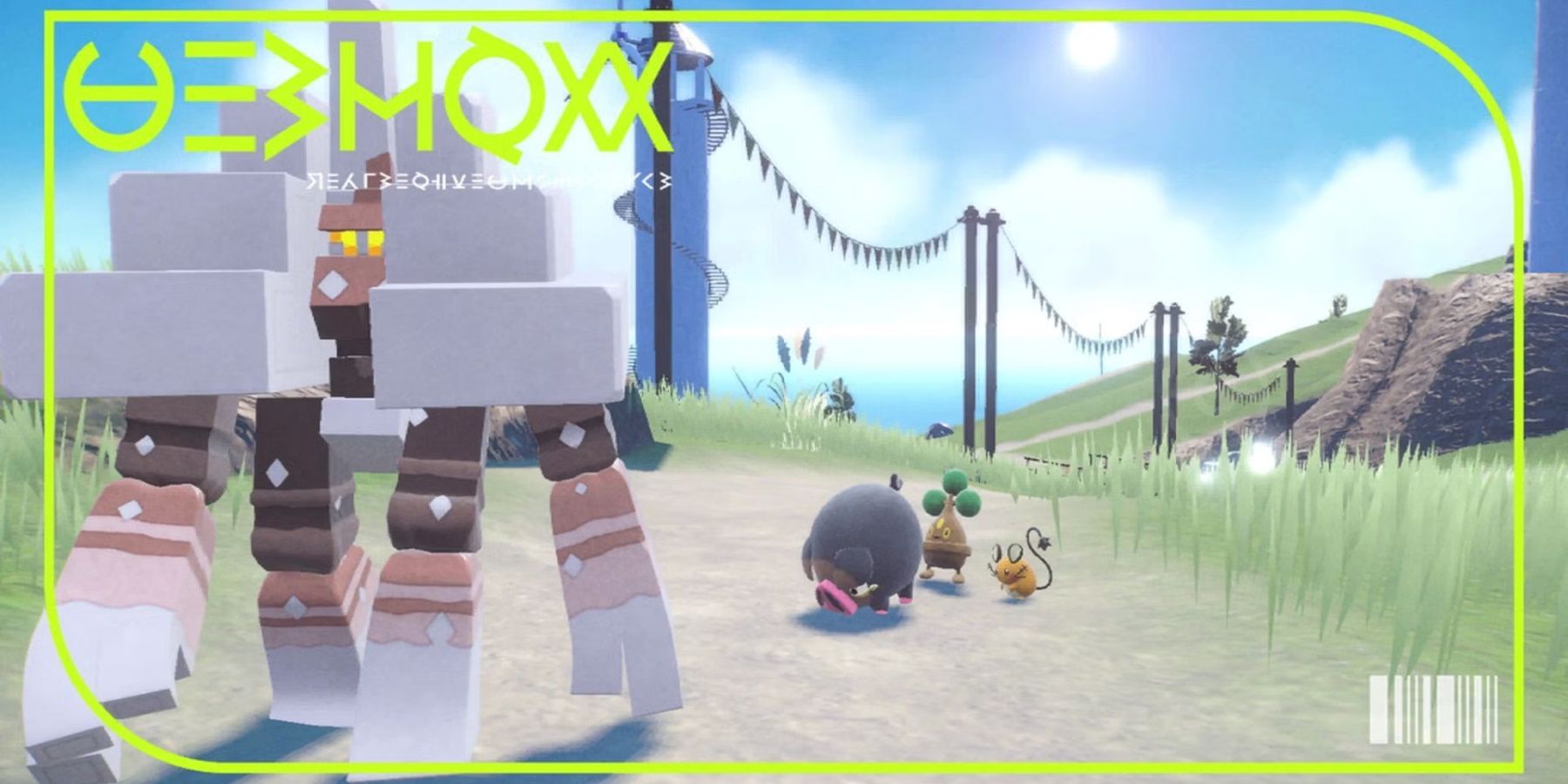The Best Walls For Competitive Play

[ad_1]
Highlights
- Competitive Pokemon teams require strong defensive walls to withstand damage and support their offensive teammates.
- Orthworm, Great Tusk, Garganacl, Quagsire, Porygon2, Toxapex, Blissey, Lunala, and Bronzong are some of the best walls for competitive Pokemon teams.
- These walls have different strengths and abilities, such as high defense stats, resistance to certain types, access to support moves, and the ability to withstand damage for a long time.
Pokemon is enjoyed by fans all over the world. Competitive and Multiplayer play have been a part of the franchise since the beginning, and as time has gone on, the Pokemon VGCs are more popular than ever. Beginners and experts alike know the competitive world isn’t as simple as training up Pokemon. Players must keep in mind the different roles, battle methods, and cores used on teams.
An important support role is a “wall.” Walls are the defensive front on any combination of Pokemon. They are built to remain on the field for a long time in order to eat damage and provide support to their offensive teammates. They function as a solid barrier to the opponent’s progress, able to take a lot of damage and often, even slowly whittle down the other side. See below for some of the best walls in competitive Pokemon.
Updated September 14, 2023, by Taylor Pittman: Pokemon Scarlet and Violet included an exciting new story for the franchise and many features that changed the competitive front. The Pokemon VGC has updated its rules to account for the new Pokemon and the evolution method known as Terrastalizing. Players can build teams with surprising Pokemon filling certain positions, including defensive walls. This list has been updated to include more of the best walls for competitive Pokemon teams from Generation Nine.
Orthworm
HP: 70
Attack: 85
Defense: 145
Sp. Atk: 60
Sp. Def: 55
Speed: 65
Orthworm appeared in a bang in Pokemon Scarlet & Violet as one of the Titan Pokemon in Paldea. The worm-like Pokemon is a surprising Steel-type, and competitive players can use its defensive prowess. Type-wise, there are more Pokemon that Orthworm is resistant to than weak to. It can handle a lot of damage before players need to start sweating.
Ground, Rock, and Steel moves are Orthworm’s go-to defensively and offensively. Players can use it as a Spikes and Stealth Rock setup to utilize entry hazards. It also has robust attack moves, including Earthquake and Earth Power. If players want the same-type attack bonus, Orthworm can also use offensive Steel moves.
Great Tusk
HP: 115
Attack: 131
Defense: 131
Sp. Atk: 53
Sp. Def: 53
Speed: 87
Great Tusk is a Generation Nine Pokemon known as a Paradox Pokemon. Paradox Pokemon are future and past relatives to modern ‘Mons that are exceptionally strong stat-wise. Great Tusk is a dual Ground/Fighting-type Pokemon, and its HP and Defense combo set it aside as a wall. Opponents are going to struggle trying to take down this beast.
Great Tusk can hold strong against Electric-types, a popular offensive choice on many teams. With Great Tusk on the field, players can utilize its equally hardy Attack stat. It has several high-powered Fighting and Ground-type moves, which can be boosted if its ability Protosynthesis is activated.
Garganacl
HP: 100
Attack: 100
Defense: 130
Sp. Atk: 45
Sp. Def: 90
Speed: 35
Rock-type Pokemon get little love in newer generations, but Garganacl is an excellent addition to the defensive type. Rock Pokemon have some obvious weaknesses against Water and other types and are notoriously slow. Garganacl makes up for this with well-balanced and stacked Defense stats.
Garganacl has support moves in its learnset that help it and its allies maintain their position on the field. Wide Guard protects against multi-target moves, so players can use strong moves like Surf and Earthquake without worrying about unwanted casualties.
Quagsire
HP: 95
Attack: 85
Defense: 85
Sp. Atk: 65
Sp. Def: 65
Speed: 35
Quagsire, while incredibly goofy-looking, has a distinct spot on defensive teams. It was first seen in Generation II, and its typing makes it stand out as a wall. Water/Ground means it doesn’t have many weaknesses, and the typing means it has access to a decent moveset that receives the Same-Type Attack bonus. Scald, in particular, damages opponents, and there is a chance it will also leave them with a burn. Additionally, of course, Earthquake is another offensive move with good type coverage.
Its ability Unaware is convenient to have on a team. It makes Quagsire ignore all status changes from its opponents and neutralizes any boosts or drops on the field. Its defense stat is lacking, but it has access to the move Recover to keep it on the field longer.
Porygon2
HP: 85
Attack: 80
Defense: 90
Sp. Atk: 105
Sp. Def: 95
Speed: 60
Porygon2 isn’t a prominent wall like some Pokemon on this list, but it is surprisingly sturdy on the field. Porygon2 is another Generation II Pokemon. With the help from the item Eviolite, its basic defensive stats are boosted, giving it a good bulk, so It won’t be easily KO’d. Its recovery is solid as well with the move Recover. Additionally, Its ability Trace means it can often switch into battle without being negatively affected by opponents’ abilities.
Moves like Toxic and Thunderwave set it up as a support role, but it is very vulnerable to Poison. Thankfully, players can confidently remove it from battle with Teleport without worrying about their next Pokemon taking any damage. Offensively, it only really shines when Dynamaxed because of its abilities Download and Analytic. Both give it Attack boosts when activated.
Toxapex
HP: 50
Attack: 63
Defense: 152
Sp. Atk: 53
Sp. Def: 142
Speed: 35
Toxapex was introduced in Generation VII. It has a considerable bulk from its Defense and Sp. Def. It almost exclusively functions as a defensive wall, and players shouldn’t hope to get much offense from it. It is one of the more stubborn Pokemon, as it is tough to KO with its recovery skills. Regenerator is partially to blame for that. The Hidden Ability restores 1/3 of its health every time it switches out. On top of this, it has access to Recover and the item Black Sludge.
However, Toxic, Baneful Bunker and Toxic Spikes are dependable passive offensive moves so that players can get some damage out of Toxapex. These moves allow Toxapex to whittle away its opponents’ health while staying standing for a long time. A more direct offensive action is Scald, but its attack is low enough that the potential burn means more for players than the damage.
Blissey
HP: 255
Attack: 10
Defense: 10
Sp. Atk: 75
Sp. Def 135
Speed: 55
Blissey, introduced in Generation II, has the highest HP in the entire series and a good Sp. Def stat. It is a popular Pokemon for a support role due to having recovery moves like Wish, Softboiled, and Heal Bell. It also can support offensively with Toxic, Stealth Rock, and Thunderwave under its belt. Blissey is a fantastic choice and an undeniable tool for team synergy and defense-based strategy.
Compared to its previous stage, its Sp. Atk allows it to throw moves like Flamethrower, but its function as a wall is the most beneficial to players overall. Players should remember that offensive hitters and wall-breakers won’t have as much trouble knocking Blissey out because of its low Defense and Speed.
Lunala
HP: 137
Attack: 113
Defense: 89
Sp. Atk: 137
Sp. Def: 107
Speed: 97
Lunala is a Legendary introduced in Generation VII, serving as the mascot for Pokemon Moon. It has a somewhat balanced stat distribution, lacking mainly in base Defense, but its greatest weakness is its vulnerability to Dark and Ghost types. Nevertheless, it has a solid defensive front with high HP and Sp. Def. paired with its ability Shadow Shield. Shadow Shield halves all damage thrown at it when its HP is full.
Its moveset is offensive and defensive. Its support moves include Calm Mind, Hypnosis, Protect, and Roost. Roost allows it to consistently maintain Shadow Shield, so taking it down quickly becomes a problem. Moves like Ice Beam and its STAB option Moongeist Beam have a good amount of power because of its higher Attack stat. Depending on a player’s battle strategy, they could use Lunala as a Tank, but its longevity on the field can be better used to bolster its offensive allies in battle.
Bronzong
HP: 67
Attack: 89
Defense: 116
Sp. Atk: 79
Sp. Def: 116
Speed: 33
Bronzong is arguably the most notable Wall available to players from Generation IV. Of course, it’s got great bulk from its defensive stats, but its ability Levitate makes it such a stand-out Pokemon. Levitate makes it immune to all Ground-type attacks and hazards on the field. It also benefits from its Steel/Psychic typing, so it doesn’t have many type-weaknesses outside of Dark, Fire, and Ghost. Its ability removes Steel’s weakness to Ground, though this can, of course, be overcome by an opponent.
As a support role, it has classic Pokemon VGC defensive moves such as Stealth Rock, Trick Room, and Reflect, and while it does want for better recovery options, it can strike offensively with moves like Gyro Ball and Explosion. So, overall, it manages to hang with even some of the stronger offensive Pokemon.
Source link



.jpg)
.jpg)
.jpg)
.jpg)
.jpg)
.jpg)